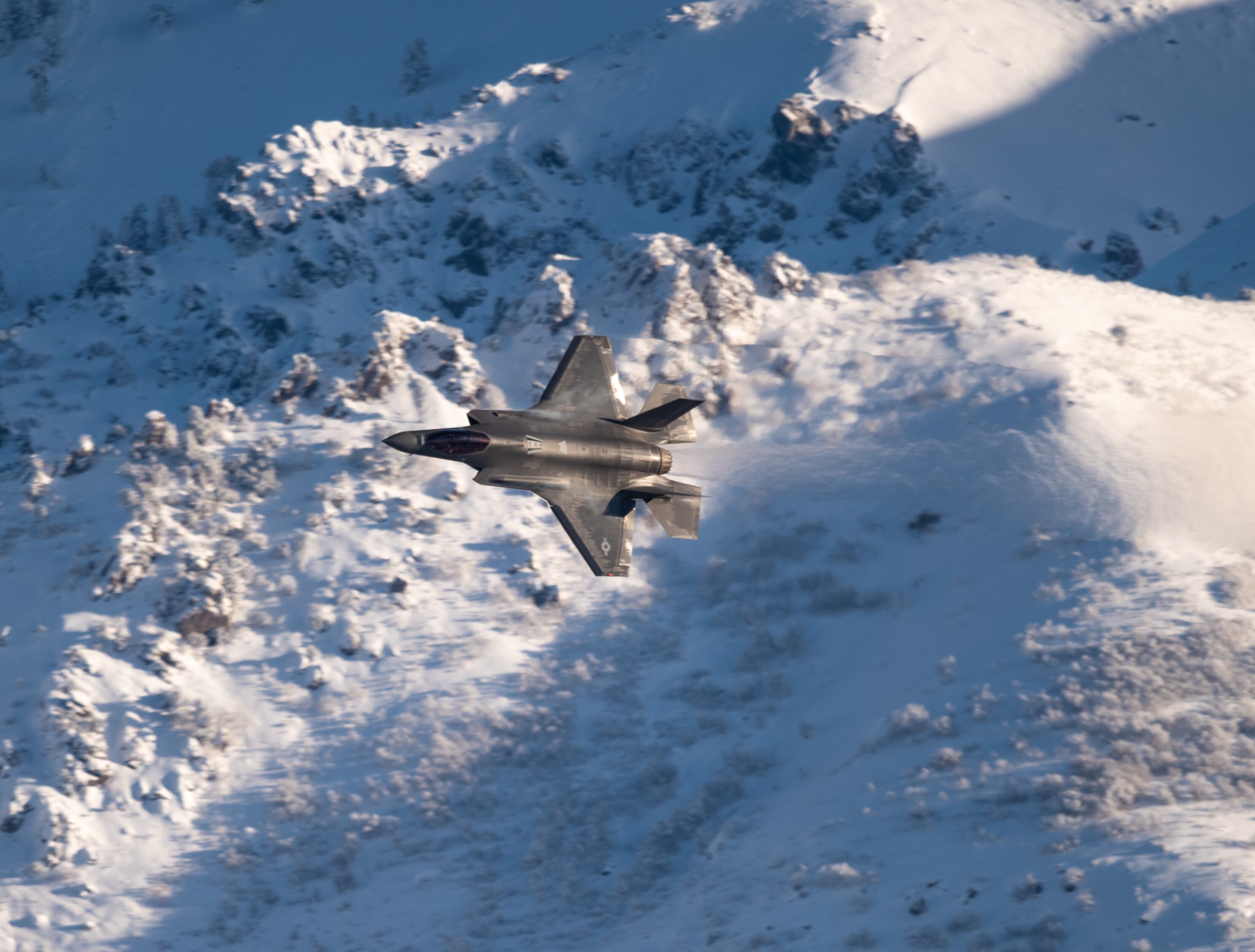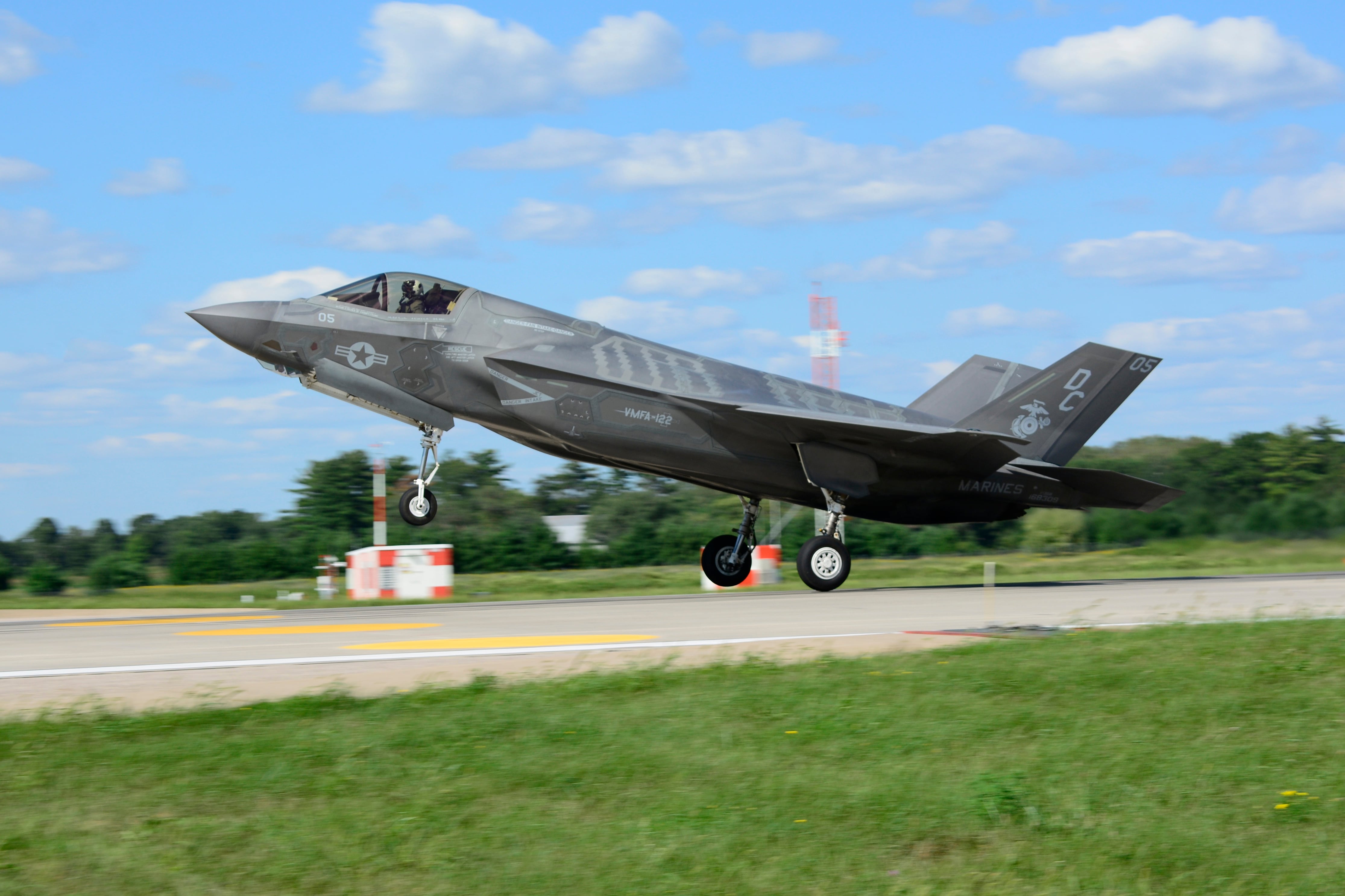WASHINGTON — The Pentagon is moving forward on a redesign of the F-35’s troubled logistics system, but a congressional watchdog organization is urging the department to hammer out critical details such as the cost and technical risks associated with the new system.
Earlier this year, the F-35 Joint Program Office announced that it would be doing away with the Lockheed Martin-designed Autonomic Logistics Information System, or ALIS, which is used to track and order spare parts, conduct mission planning, guide maintainers through repairs, and other key functions necessary to support the Joint Strike Fighter.
RELATED

Due to longstanding performance problems with ALIS, the Defense Department intends to co-develop a new cloud-based replacement with Lockheed known as the Operational Data Integrated Network, or ODIN, which would be fielded by 2022.
But in a new report released Monday, the Government Accountability Office noted that the Department of Defense still needs to solidify the acquisition strategy and goals of ODIN.
“As DOD proceeds with replacing ALIS with ODIN, it will be imperative for the department to carefully consider and assess the key technical and programmatic uncertainties discussed in this report,” the GAO stated. “These issues … are complex, and will require significant direction and leadership to resolve.”
Pentagon spokesman Lt. Col. Mike Andrews said in a statement that the move to ODIN will create “a new, cloud native system that incorporates a new integrated data environment and a new suite of user-centered applications” and include strengthened cyber protections as well as real-time monitoring of system performance.
Although the GAO did not finish its report until this month, it primarily based its findings on data from fiscal 2019, meaning that the report may not take into account the F-35 program’s newest information on ODIN.
However, the GAO raised questions about the scope of the ODIN program, most of which have not publicly been answered.
“DOD lacks clarity about the goals of the re-design, such as the capabilities that will be included in the future system and the extent to which ALIS will be hosted in the cloud,” the organization stated.
“In addition, DOD has not fully assessed key risks or uncertainties, including the extent to which DOD can adopt an Agile software development approach or manage the system itself. Finally, because it has not answered key questions about the future of the system, such as the extent to which the re-design will incorporate current ALIS software, DOD has not been able to develop accurate cost estimates for the ALIS re-design.”
The GAO noted that the Defense Department has often struggled to lay out exactly how much it has spent on ALIS over the program, and that it has recently procured new hardware for ALIS despite being uncertain whether that hardware will be necessary once the transition to ODIN is complete.
RELATED

However, cost is not the only problem afflicting ALIS. The system has been beleaguered by numerous technological challenges, including difficulties with the “deployable” version of ALIS, which is bulky and has limited internet connectivity, as well as gaps in technical data that force maintainers to upload details on spare parts themselves.
Lockheed Martin has received positive feedback from users about the latest updates to ALIS, and the company "is working closely with the F-35 JPO on ALIS enhancements and we remain committed to improving speed, reducing labor and enhancing the user experience as we transition to the Government led Operational Data and Integrated Network (ODIN),” Lockheed spokesman Brett Ashworth said in a statement.
During the McAleese & Associates conference in March, Lt. Gen. Eric Fick, the head of the F-35 program office, said ODIN will be developed with extensive user feedback and will reduce reliance on Lockheed support personnel.
However, when asked to detail how the government and Lockheed would split responsibilities for ODIN, Fick said that the exact distribution of work is still being decided.
“The biggest difference between ALIS and ODIN is that the government is leading the ODIN development effort, leveraging the capabilities and the contributions like Kessel Run, Lockheed Martin, the 309th [Software Maintenance Group] out at Hill [Air Force Base], bringing them together to deliver the apps and the infrastructure and the underlying data architecture that’s required,” he said, adding that the work would go to the best performer.
The first hardware for ODIN, which is set to be delivered later this year, will also help run legacy ALIS, he said.
“We intend to cut over the first squadron entirely — divorcing it from legacy ALIS — in the fall of 2021, so a year later,” he said. “That deployment timeline will be contingent on the needs of the user. So we’re not going to interrupt a carrier deployment for the update.”
But the transfer to ODIN is not a panacea, the GAO warned.
“Officials from the Office of the Director of Operational Test and Evaluation stressed that effectively transitioning from the current system to a future one will be particularly challenging for DOD given the need to continue sustaining the more than 400 aircraft that have already been fielded with current ALIS,” the organization stated.
Valerie Insinna is Defense News' air warfare reporter. She previously worked the Navy/congressional beats for Defense Daily, which followed almost three years as a staff writer for National Defense Magazine. Prior to that, she worked as an editorial assistant for the Tokyo Shimbun’s Washington bureau.







